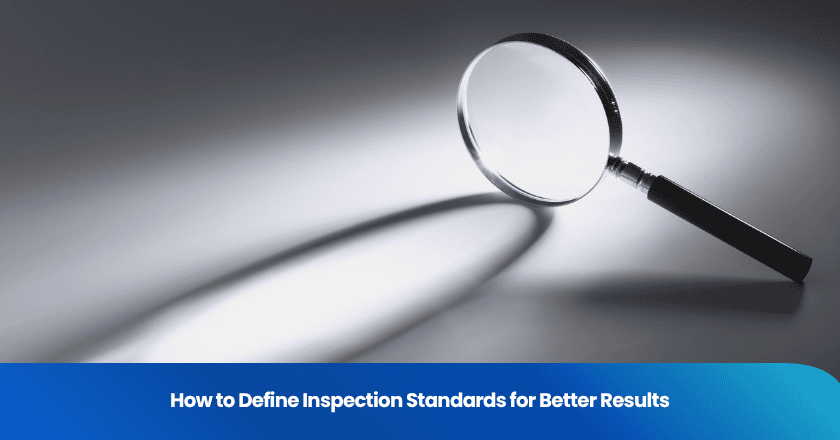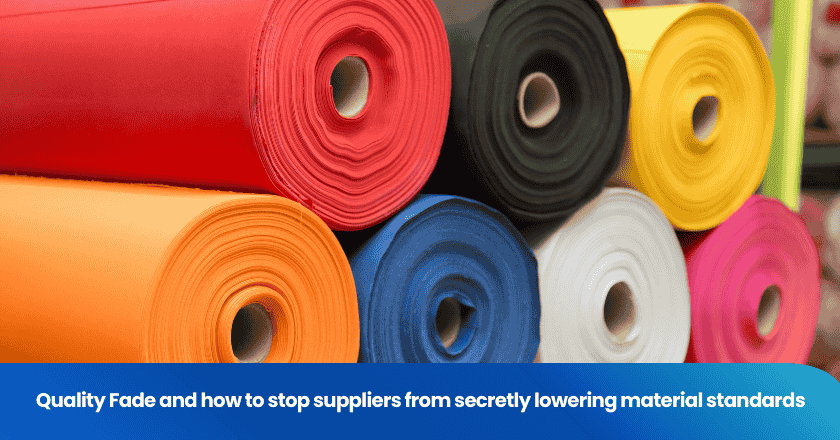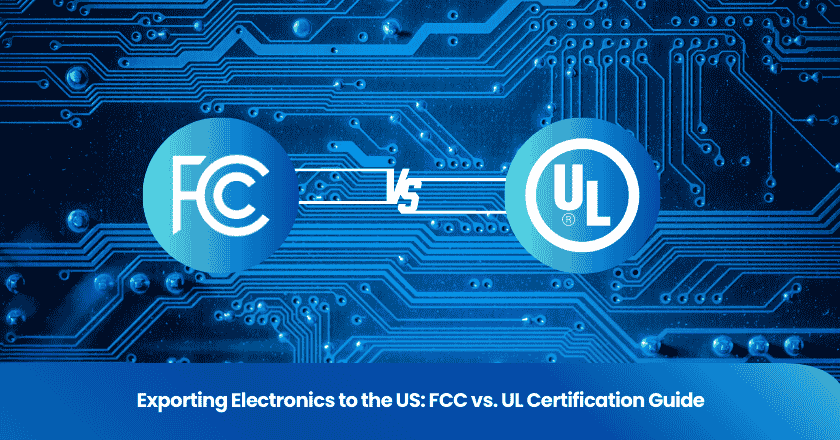
When you define inspection standards, you set clear expectations for quality and consistency. These standards guide your team and help prevent costly mistakes.Systematic procedures and well-trained teams create a strong foundation for reliable inspections.
Define Inspection Standards
What Are Inspection Standards
When you define inspection standards, you create a clear set of rules and expectations for your production process. These standards and specifications outline the exact requirements that products must meet before they reach your customers. In manufacturing, inspection standards serve as the foundation for every quality inspection. They guide your team through each step, from raw material checks to final product evaluation.
To define inspection standards effectively, you need to address several key components:
1. Determine the inspection level for each product or process.
2. Draw a random sample from each batch to ensure unbiased results.
3. Check the sample against your established standards and specifications.
4. Accept or reject the lot based on the findings.
You also need to consider the different stages of assessment:
- Pre-Production Assessment (PPA): Evaluate materials and processes before production begins.
- In-Process Assessment (IPA): Monitor quality during manufacturing.
- Final Quality Assessment (FQA): Inspect finished products before shipment.
A comprehensive approach to define inspection includes setting clear quality standards, verifying raw material quality, validating samples and batches, conducting in-process checks, reporting nonconformance, and documenting every step. This structure ensures that your team follows a consistent process and that every product meets your expectations.
Tip: When you define inspection standards, use simple language and visual aids like checklists or diagrams. This helps everyone on your team understand and follow the requirements.
Why Clear Standards Matter
Clear inspection standards play a critical role in achieving reliable results. When you define inspection criteria with precision, you reduce confusion and prevent costly mistakes. Unclear standards often lead to disagreements about defect classification. For example, your inspectors might label an issue as a major defect, while the factory considers it minor. These misunderstandings can cause disputes, slow down production, and damage relationships with suppliers.
Miscommunication about standards and specifications, such as sampling plans or pass/fail thresholds, can disrupt the entire quality inspection process. Disputes over unclear criteria create tension between buyers and suppliers, making it harder to resolve problems quickly.
When you define inspection standards clearly, you gain several important benefits:
- You maintain product consistency. Every item meets the same requirements, which ensures uniformity and precision.
- You reduce costs. Early detection of defects means less rework and waste, which lowers your production expenses.
- You boost customer satisfaction. High-quality products lead to happier customers and stronger loyalty.
- You protect your brand reputation. Consistent quality control prevents recalls and negative publicity.
- You ensure compliance. Meeting regulatory standards helps you avoid fines and maintain certifications.
A well-structured approach to define inspection standards supports every stage of your operation. You create a culture of accountability, where everyone understands their role in maintaining quality. By focusing on clear standards and specifications, you set your team up for success and deliver better results with every quality inspection.
Relevant Standards
Industry and Regulatory
You must understand the industry and regulatory standards that shape your inspection process. These standards set the baseline for quality, safety, and environmental responsibility in manufacturing and construction. Regulatory compliance is essential for avoiding penalties and maintaining market access. In the U.S., you follow OSHA for workplace safety, EPA for environmental protection, and CPSC for consumer product safety. Construction sites require adherence to NFPA fire codes and state-level regulations, such as California’s Proposition 65.
Global markets require you to adapt to different regulations. In the U.S., the Food Safety Modernization Act focuses on prevention and accountability. The EU emphasizes harmonization and traceability, while China enforces strict food safety laws. You may also need to prepare for third-party audits to verify compliance with these standards.
Tip: Regularly review updates to regulatory standards to ensure your construction projects and manufacturing operations remain compliant.
Internal Requirements
You must set internal requirements that go beyond regulatory compliance. These requirements help you maintain consistent quality and address specific risks in your construction and manufacturing processes. You should establish inspection types such as incoming, in-process, first article, and final inspections. Specialized inspections target unique product concerns.
| Inspection Type | Purpose |
|---|---|
| Incoming Inspection | Verifies material quality before production or construction begins. |
| In-Process Inspection | Monitors quality at key stages during construction and manufacturing. |
| First Article Inspection | Confirms the first item meets specifications before mass production. |
| Final Inspection | Checks finished products or completed construction against standards. |
| Specialized Inspections | Addresses unique requirements for certain products or projects. |
You need to conduct regular internal audits, document your quality management system, and implement corrective actions. Training ensures your team applies inspection standards consistently. Inspection data drives continuous improvement, helping you identify root causes and strengthen your construction and manufacturing processes.
Essential Tips for Successful Factory Inspections
You can achieve successful factory inspections by following a set of essential tips that focus on organization, methodical processes, and ongoing skill development. These best practices help you create a reliable inspection process, reduce errors, and improve product quality. Below, you will find practical advice on how to implement systematic procedures, select and develop qualified inspectors, and foster effective training and communication within your team.
Systematic Procedures
Establishing systematic procedures forms the backbone of any effective inspection process. When you standardize your approach, you ensure that every inspection follows the same steps and criteria, regardless of location or team. This consistency leads to more accurate results and fewer missed defects.
Here are the best practices for building systematic procedures:
1. Set clear inspection criteria so everyone understands the goals and evaluation standards.
2. Develop and implement standard operating procedures (SOPs) to guide each step of the inspection process.
3. Assign qualified inspectors to carry out inspections, ensuring accuracy and reliability.
4. Maintain thorough documentation to track inspection results and identify areas for improvement.
When you apply these best practices, you see measurable improvements. For example, in one case study, systematic defect prevention methods led to a 60% reduction in defects. Early-phase reviews and causal analysis shifted defect detection to earlier stages, which improved overall quality and efficiency. Regular reviews and data analysis help you prioritize actions and continuously refine your inspection process.
Tip: Use checklists and visual aids to make SOPs easy to follow for all quality inspectors.
Qualified Inspectors
The effectiveness of your inspection process depends on the skills and expertise of your inspectors. You need to ensure that every member of your inspection team meets the necessary qualifications and stays up to date with industry standards.
Best practices for selecting and developing inspectors include:
- Verify that inspectors meet all legal requirements, such as state licensing.
- Choose inspectors with formal education in building sciences or related fields.
- Prioritize hands-on experience, such as apprenticeships or working under seasoned professionals.
- Encourage inspectors to obtain national or state-level certifications to demonstrate their expertise.
- Support continuing education so inspectors stay current with building codes and safety practices.
Quality inspectors who meet these standards deliver more reliable results. Their knowledge and experience help them identify issues quickly and accurately, which strengthens your inspection process and supports your manufacturing goals.
Training and Communication
Ongoing training and strong communication are essential tips for maintaining high inspection standards. You should invest in regular training programs that cover both technical skills and regulatory compliance. Effective training equips your team with the ability to plan audits, gather evidence, conduct interviews, and write detailed reports. Tailor training to the specific responsibilities of each group of quality inspectors to maximize its impact.
Best practices for training and communication include:
- Provide auditing and inspection skills training to improve planning, evidence gathering, and reporting.
- Ensure training covers regulatory compliance, such as GMP, GDocP, and GDP.
- Customize training content for different teams to address their unique roles in the inspection process.
Effective communication among inspection teams leads to better outcomes. When your teams share information quickly, they can act on findings without delay. Regular inspections provide real-time insights into field conditions, allowing you to address issues proactively. Standardized processes and communication tools help maintain data integrity and ensure everyone stays informed.
By focusing on these essential tips and best practices, you create a culture of accountability and continuous improvement. Your quality inspectors become more effective, your inspection process becomes more reliable, and your manufacturing operations achieve higher standards of quality and efficiency.
Inspection Criteria and SOPs
Measurable Criteria
You need measurable criteria to ensure every inspection delivers consistent and reliable results. Clear inspection criteria set the foundation for your inspection and test plans. When you define these standards, you help inspectors know exactly what to look for and how to evaluate each product or process.
- Clear standards and specifications guide your team during every inspection.
- Detailed quality standards make it easier for inspectors to identify issues.
- Strong communication systems ensure everyone understands the quality expectations.
You should also develop quality control plans that outline product specifications, testing protocols, and acceptance criteria. These plans describe inspection methods and corrective actions for any deviations. By following these steps, you create a transparent process that supports continuous improvement.
Acceptance Thresholds
You must establish acceptance thresholds to determine when a product meets your standards or requires corrective action. Different industries and product types use various methods to set these thresholds.
The following table summarizes common approaches:
| Method | Description |
|---|---|
| Single Sampling Plan | Inspect one sample from the lot; accept or reject based on defects found. |
| Double Sampling Plan | Take a second sample if the first is inconclusive; decide using both results. |
| Acceptance Sampling Chart | Use code letters and AQL to set sample size and defect limits. |
| AQL Chart | Define acceptable quality levels using sampling codes and AQL indexes. |
| Acceptance Point | Maximum defects allowed in a sample; varies by defect class. |
| Rejection Point | Minimum defects needed to reject an order; always one more than acceptance. |
You may also see thresholds set by regulatory agencies, such as the EPA, which uses credible industry averages and published data to establish benchmarks for different materials. This flexible approach adapts to the unique attributes of each product and supports compliance with green construction standards.
Roles and Documentation
Assigning Responsibilities
You need to assign clear roles to your inspectors to ensure every inspection runs smoothly. When you match responsibilities to each inspector’s skills, you create a more effective team. For example, you might select a scribe who excels at fast and accurate note-taking. Subject matter experts should handle technical evaluations, especially when they remain calm under pressure. Rotating roles among inspectors gives everyone a chance to grow and keeps your process resilient.
- Define each inspector’s role and responsibility before the inspection begins.
- Include team members with specialized knowledge, such as health and safety committee members.
- Involve management and trade union representatives to bring diverse perspectives.
A clear assignment of responsibilities improves your inspection process in several ways:
| Benefit | Explanation |
|---|---|
| Clarity and transparency | Everyone knows their tasks, which removes confusion. |
| Improved communication | The right people join discussions, so messages stay focused. |
| Enhanced accountability | Each inspector has a clear point of contact for updates. |
| Efficient resource allocation | You match tasks to inspectors’ strengths, avoiding misallocation. |
| Reduced risk of overlap | You prevent duplicated or missed tasks, making inspections more efficient. |
Standardized Forms
Standardized forms help your inspectors document findings in a consistent and reliable way. When you use the same templates for every inspection, you make it easier to compare results and spot trends. These forms also support proactive maintenance, reduce downtime, and improve safety by ensuring inspectors check every critical component.
When you train inspectors to use standardized forms, you improve data consistency and traceability. Inconsistent documentation can cause confusion during audits, but uniform templates help you maintain clear quality records. ISO 9001 also highlights the importance of traceability, making standardized forms a key part of your inspection process.
Monitoring and Improvement
Handling Deviations
You need a structured approach to address deviations during inspections. Effective nonconformance management ensures that you catch issues early and prevent them from recurring. Follow these steps to handle deviations:
1. Identify the deviation at any stage of manufacturing, testing, or documentation.
2. Document the deviation with details such as time, location, personnel, and initial observations.
3. Assess the deviation to determine its impact and severity.
4. Investigate the root cause using tools like Fishbone diagrams or the 5 Whys method.
5. Implement Corrective and Preventive Actions (CAPA) to address the issue and prevent future occurrences.
6. Review and approve the investigation and CAPA through your quality assurance team.
7. Check the effectiveness of the CAPA over a set period.
8. Close the deviation once all actions are complete and verified.
This process strengthens your quality control system. CAPA focuses on eliminating root causes, not just symptoms, so you reduce the risk of repeat failures. By addressing problems at their source, you build a more reliable inspection process.
Regular monitoring and timely corrective actions help you maintain high standards and minimize disruptions.
Continuous Improvement
Continuous improvement keeps your inspection standards relevant and effective. You can use proven frameworks to refine your quality control efforts:
| Framework | Focus | Common Tools | Best For |
|---|---|---|---|
| Lean Management | Reduce waste, streamline workflow | Value stream mapping, 5S, Kanban, Kaizen | Enhancing productivity |
| Six Sigma | Reduce variation, data-driven | DMAIC, root cause analysis, statistical control | High-precision processes |
| Total Quality Management | Quality at every level | N/A | Collective quality focus |
| PDCA | Continuous testing and learning | Project charters, 5 Whys, fishbone diagrams | Simple improvement cycles |
You should collect regular feedback from inspections to identify hazards and ensure compliance. This feedback allows you to update your standards and foster a culture of safety. Studies show that workplaces with ongoing inspections and corrective actions experience fewer injuries and maintain stronger quality control. Robust documentation and reporting help you track progress and support continuous improvement.
Well-defined inspection standards drive consistent quality, efficiency, and product excellence. You gain measurable benefits:
- Enhanced performance visibility
- Strategic alignment and process optimization
- Higher customer satisfaction and trust
Review and update your inspection processes regularly to maintain effectiveness and stay ahead.
FAQ
What is the main purpose of inspection standards?
Inspection standards help you maintain consistent product quality. They provide clear guidelines for your team to follow during every inspection.
How often should you review inspection standards?
You should review inspection standards at least once a year. Regular updates ensure your process stays effective and compliant with industry changes.
Who should be involved in setting inspection standards?
Include quality managers, inspectors, and subject matter experts. Their combined knowledge ensures your standards are practical and thorough.
Grow your business with TradeAider Service
Click the button below to directly enter the TradeAider Service System. The simple steps from booking and payment to receiving reports are easy to operate.



